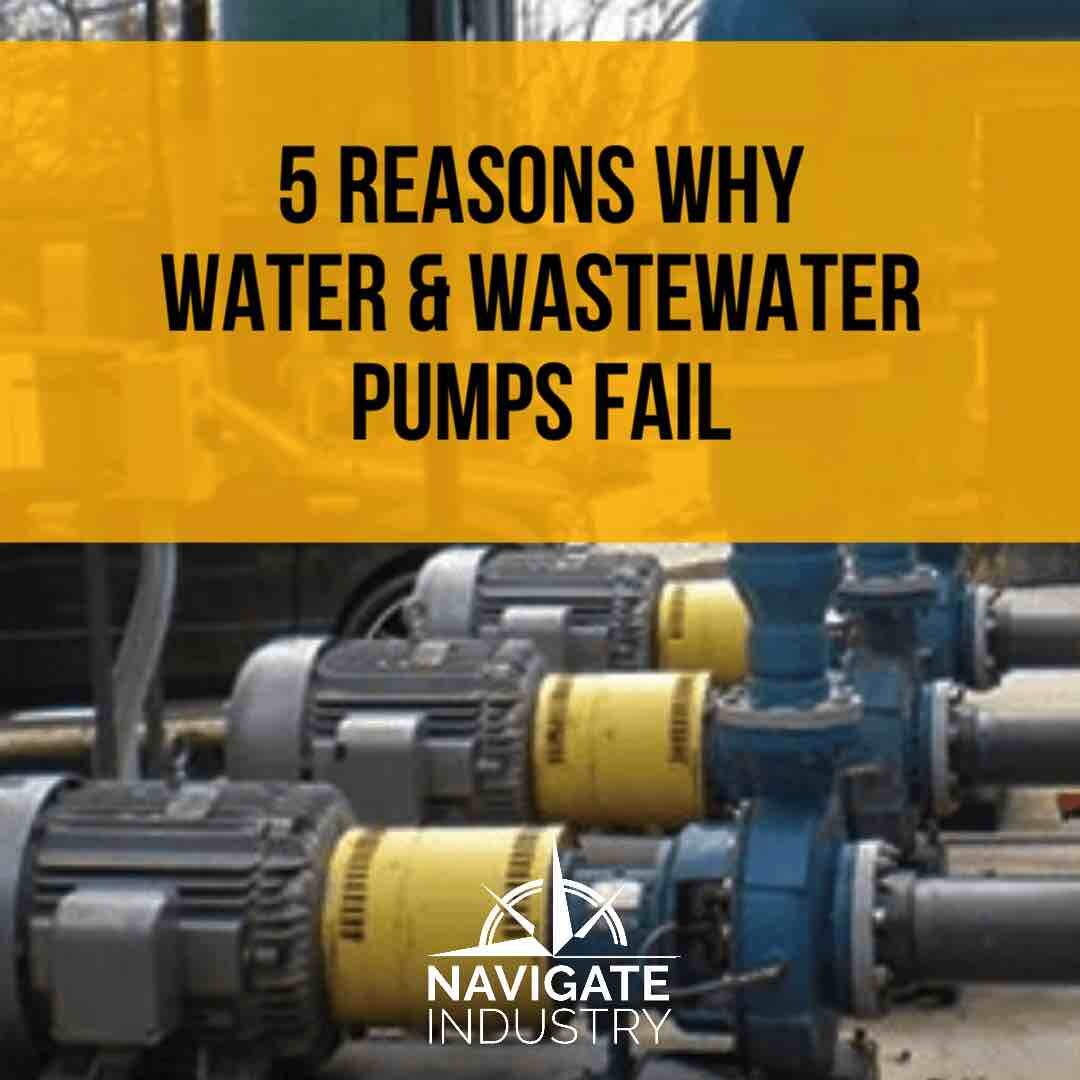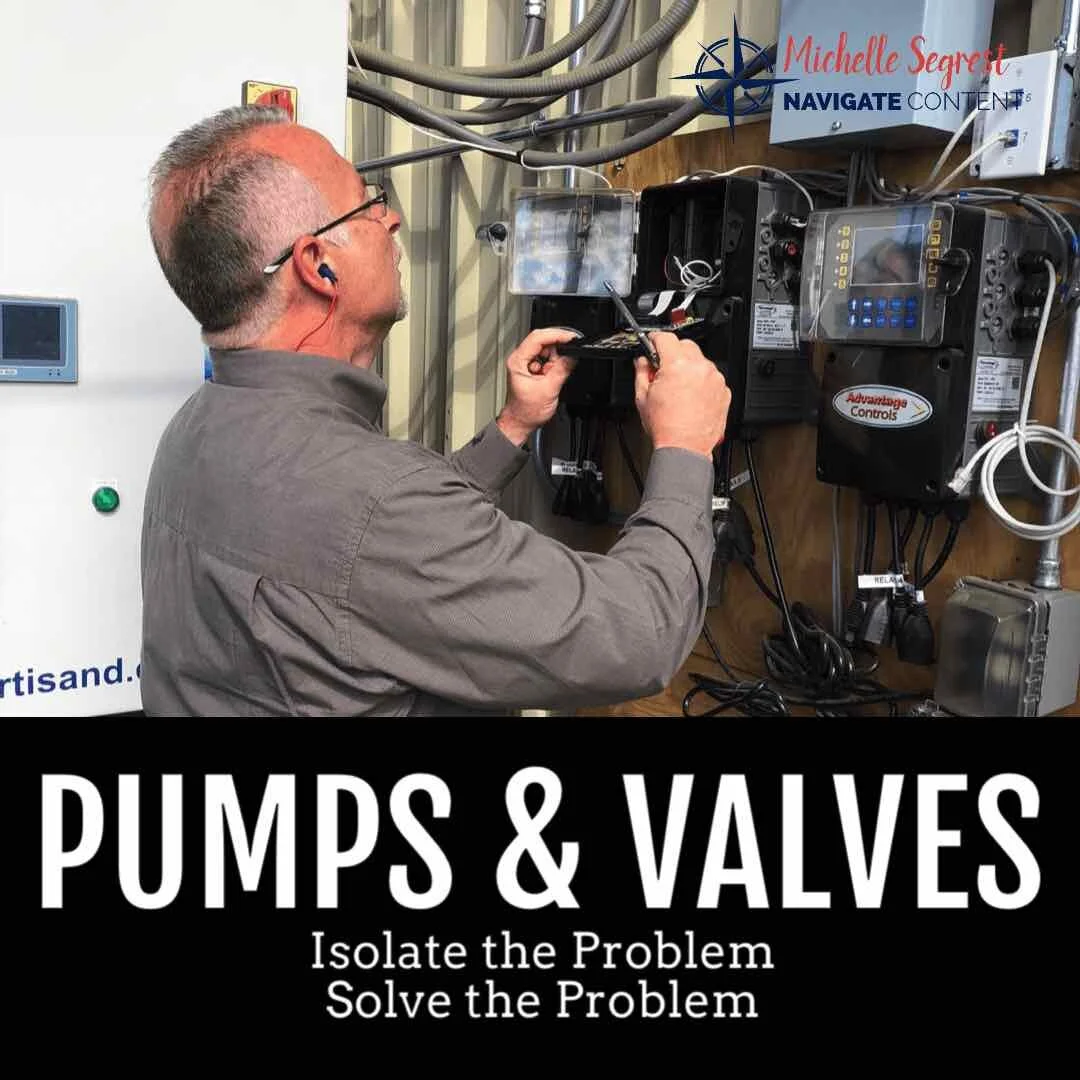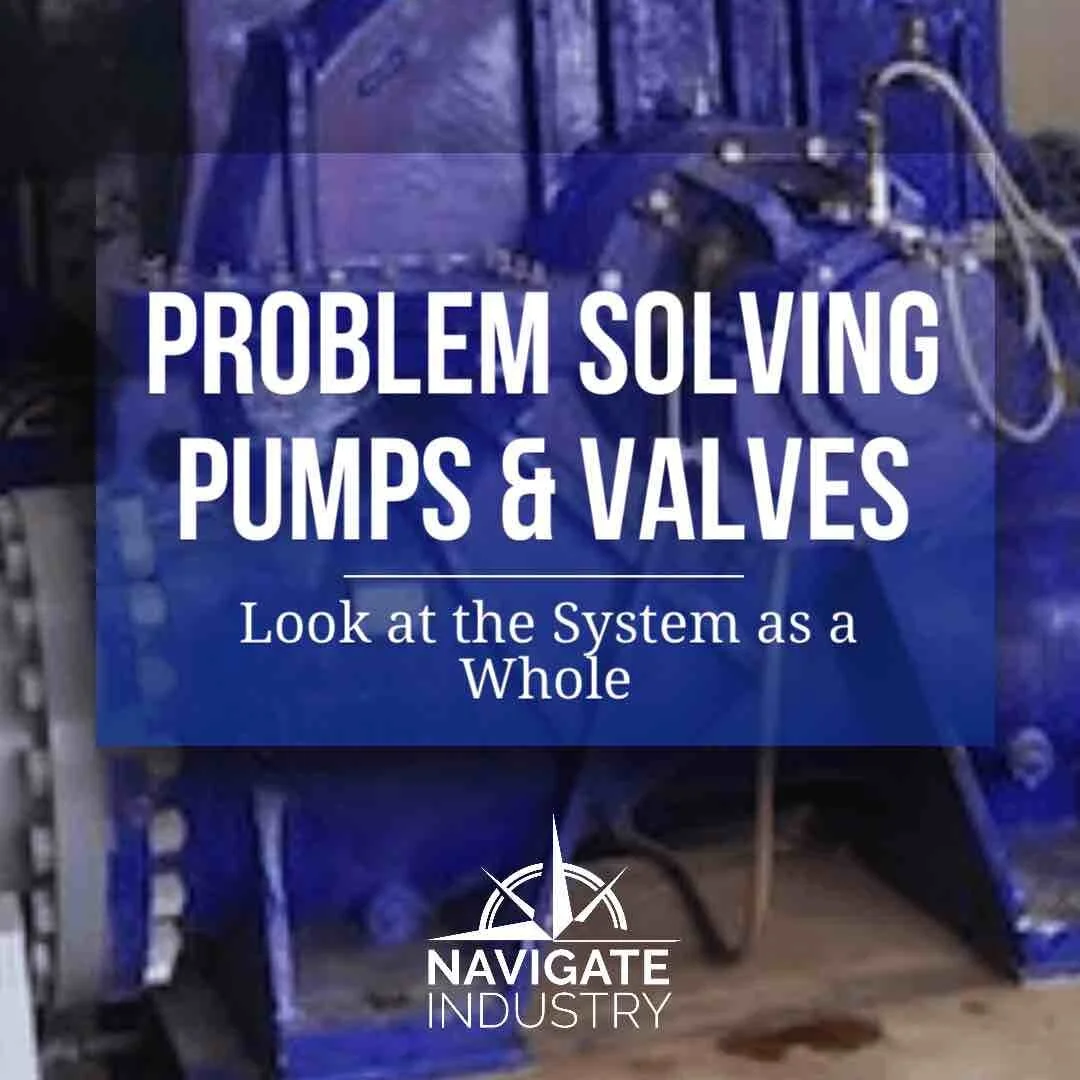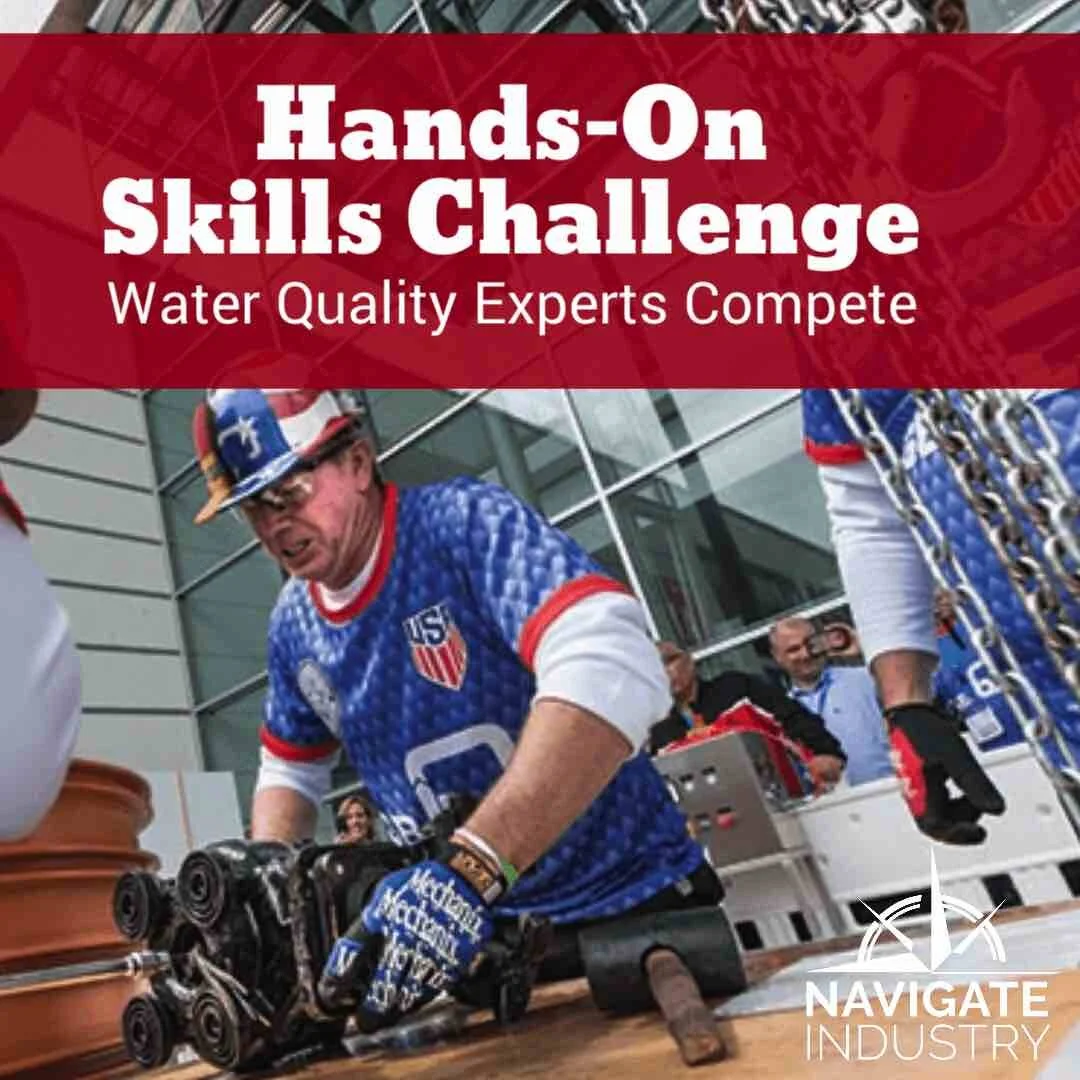Water and Wastewater Pumping Solutions—Industry Trends 2017
/Advancements in water treatment and plant modernization were driving growth in the water and wastewater pumping industry in 2017.
By Michelle Segrest, Navigate Content - Reporting for Maintenance Technology Magazine
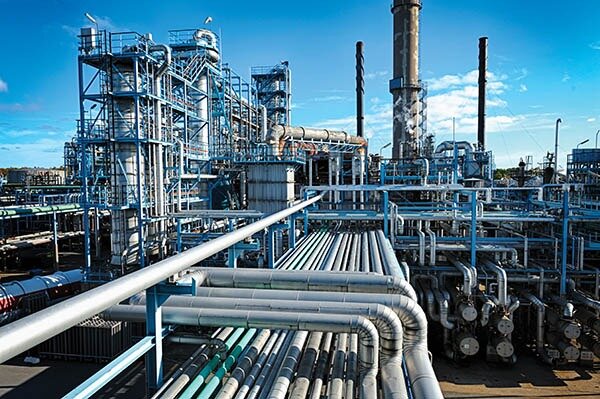
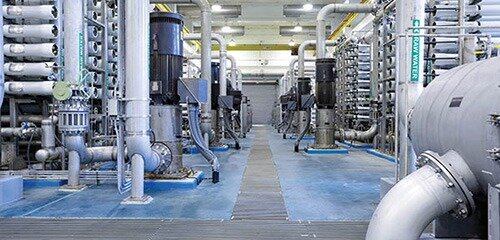
While new construction in the municipal water-treatment market has remained relatively flat, growth in the industrial water-treatment market has increased—driven largely by modernization efforts that seem to be pervasive across the power-generation segment, according to Charles P. Crowley Company (CPC, Baldwin Park, CA, cpcrowley.com) managing director Jon Crowley. One trend that Crowley sees throughout the industry is modernization through “repowering.”
Repowering Process Replaces Old Coal Boilers with Gas-Fired Turbines
The repowering process involves replacing old coal boilers with gas-fired turbines that send heat to a heat-recovery steam generator (HRSG), which feeds a steam turbine. These types of systems can increase electricity production and overall efficiency of the plant by as much as 40% more than coal-fired plants. They help plant owners reduce costs—specifically maintenance costs—as newer, modern systems are easier to work with, Crowley said. The switch to natural gas results in other savings because feed stocks are abundant, less expensive, and easy to transport to plant sites.
For decades, plants in areas such as California and Nevada have been at the forefront of the environmental movement. Many have already made the switch to natural gas. Crowley points to a global modernization effort that is following California’s lead—as plants in other parts of the United States, Mexico, China, India, and elsewhere around the globe, are standardizing on natural gas.
Like all power plants, gas-fired plants require a lot of water. This boiler feed-water must be treated to avoid scale, corrosion, and other problems that damage or impede the boiler’s performance. There is a direct correlation between the quality of the water used and the efficiency of the plant. Depending on the feed-water quality, varying levels of pretreatment are necessary to remove impurities and suspended solids, and to adjust the water’s pH to a neutral level.
Reciprocating and rotary gear pumps are widely used to inject the precise dosage of chemicals needed for these applications.
Water Treatment Solutions in the Water & Wastewater Industry
Most businesses in the United States have a need to treat the water they use—whether they are food growers, juice makers, product manufacturers, or businesses such as hotels and restaurants. Some of the processes used include reverse osmosis (RO), pH adjustment, and scale inhibitors.
Reverse osmosis. RO treatment processes work by using a semipermeable membrane to remove ions, molecules, and particles from water. “By applying pressure that is greater than the naturally occurring osmotic pressure, the water seeps through the membrane, while the larger molecules or ions remain trapped in the membrane,” explained Fluid Systems & Controls (FSC, New Berlin, WI, fscinc.com) president Donn Davis. “This process demineralizes the water.”
In areas such as Florida and throughout the Southeastern United States, Davis said he sees a growing demand for RO applications and the associated treatment and maintenance applications that come with maintaining RO systems.
“FSC works with OEMs that build large-scale reverse-osmosis systems,” Davis said. “Metering pumps are used to move pump chemicals that clean and maintain the RO membranes.”
RO membrane fibers are cellulose based. They degrade in alkaline conditions, which results in a loss of efficiency. Long-term exposure to alkaline conditions leads to membrane replacement, which is extremely expensive. According to Davis, extending the life of the membrane fibers is accomplished in two primary ways—through pH adjustment and by administering scale inhibitors—both of which are dosed using metering pumps.
pH adjustment. Raw pre-treated water tends to be slightly alkaline. To protect the membrane, the pH of alkaline raw water is adjusted to neutral, by injecting precise amounts of acids (typically hydrochloric acid), to lower the pH.
Once the treated (or permeated) water passes through the membrane, it can become slightly acidic. To deliver the best water quality possible, the pH is often re-adjusted using caustics (typically sodium bicarbonate) to achieve a neutral pH. Metering pumps are primarily used to inject the precise amounts of caustics needed for the process.
The specifics of pH balancing are not as stringent as what a municipal drinking-water plant would administer, however the timing of the treatment is uncompromising. Power plants run 24/7 operations and cannot function without abundant supplies of treated water. As such, the pumps used must be highly reliable and able to run continuously.
Following the initial treatment, process water flows to a flocculation basin where chemicals are dosed using metering pumps to aggregate precipitated particles, making them easier to filter out. After this treatment, the coagulated particles settle in a basin where they separate from water and are sent to a sludge-treatment facility.
Scale inhibitors. Other water-treatment applications include administering scale inhibitors for cooling towers. Although water is ideally suited for cooling purposes, its life-giving properties can encourage bacterial growth that can foul system surfaces. Water also dissolves gases (oxygen and carbon dioxide), which can corrode metals. If untreated, scale deposits and fouling can reduce heat transfer and diminish the plant’s efficiency. To protect plant equipment, precise doses of sulfuric acid or phosphate are added to the cooling-tower water to mitigate scaling and to prevent fouling, Crowley explained.
“Once the process water is used, it must be treated before it can be disposed,” he said. “Most power plants have their own wastewater-treatment plants, and these units administer another round of pH adjustment, plus any other treatments required to meet the local environmental-discharge limits.”
One by-product of the RO process is that suspended solids, microorganisms, and mineral scales accumulate on membranes. To extend the life of the RO membranes, and to increase the efficiency of the treatment process, a wide variety of scale inhibitors is dosed by metering pumps on the membranes.
“Precise dosing saves money on chemical costs and also helps to prevent calcium-carbonate scaling,” Davis added. “Without scale inhibitors, membranes could become saturated with heavy elements that reduce efficiency and clog the process in as little as 48 hours. The metering pumps used to dose the scale inhibitors play a key role in maintaining the equipment.”
Maintenance Challenges in the Water & Wastewater Industry
Many OEMs in the water and wastewater industry have their own maintenance teams. When it comes to maintaining their pumps, some customers know exactly what spare parts they need. Others leverage the expertise of distributors by outsourcing their inspection and maintenance activities.
For example, CPC sells pumps and skidded systems directly to power plants throughout Southern California and Nevada, and they also sell to large OEMs that service the power industry around the globe. These OEMs do not specialize in maintenance. Much of the servicing and repair work comes back to the distributor or service company.
Because uptime is of paramount importance, the maintenance teams at power plants demand a responsive distribution network, with parts that are always in stock and expert service technicians that can respond in a moment’s notice.
A majority of the water-treatment applications in power plants are best served by rotary-gear pumps. Their seal-less design is easy to maintain because there are no leak points for harsh chemicals to damage the pump or surrounding equipment.
Because every inch in a power plant is valuable, plant operators prefer pumps with small footprints. The trend is to move away from horizontally laid infrastructure.
“Vertical configurations are less susceptible to flooding, they are easier to work on, and they don’t require staff to crawl on the floor to access,” Crowley said. “The ergonomic, front pull-out-designed pumps can be repaired in place. This minimizes downtime by eliminating the need to lock out/tag out the pump and move it to the repair shop—which, in some plants, must be done by a separate union employee.”
Maintenance activities can be further streamlined by selecting pumps that require a limited number of parts and with pumps that use symmetrical parts that only fit one way. This simplifies parts replacement and keeps repair time to a minimum.
Seven Trends to Watch in 2017
Bluefield Research (Boston) has forecast seven trends to watch in 2017, and they show significant opportunities for private corporations. These include an emphasis on big data and the Internet of Things, as well as new business models driven by rising water and wastewater bills. Water rates are rising at an average 7% every year, Bluefield stated.
Through its ongoing market tracking and analysis, Bluefield’s water experts anticipate shifts across municipal and industrial water markets. Seven key trends that will have an impact on the water industry in 2017 include:
Infrastructure investment at the forefront.
Rate escalation sets the stage for business-model innovation.
Developed markets forced to confront aging networks.
Water gets smart with an emphasis on Big Data and IoT.
Bottom line enables innovation for industrials.
California sets the stage for water reuse.
Private sector looks to water for opportunity.
Additional analysis from the firm’s experts about each signpost is available at no cost. The forecast provides valuable insight for environmental managers and water companies about what to expect and market opportunities.
Making Wastewater Pumping Systems Smarter
In the wake of a renewed interest in federal investments in infrastructure, the District of Columbia Water and Sewer Authority (DC Water) and Xylem Inc. partnered to highlight the urgent need for investing in smart-water infrastructure to maximize operational productivity.
In a report released in early March 2017, the American Society of Civil Engineers estimated that the U.S. needs to invest a minimum of $123 billion/yr. in water infrastructure over the next 10 years to achieve a good state of repair.
To advance research and development in the area of smart-water infrastructure and advanced data analytics in the sector, Xylem and DC Water expressed a commitment to accelerating innovation through field-driven pilots that focus on increasing the productivity of managing water and wastewater and improving the resilience and sustainability of those operations.
“In the U.S., our water and wastewater infrastructure faces a daunting investment gap that places these critical systems at risk and leaves our communities vulnerable to the consequences of system failures,” said Patrick Decker, president and CEO of Xylem. “We are so pleased to be able to partner with DC Water–a true industry leader–to address these challenges, leveraging technology to develop new, more sustainable solutions.”
George Hawkins, CEO and general manager of DC Water, said, “At DC Water, we’re always looking down the road for the next innovation that will help us do our job better, at less cost. This new technology accomplishes that and I’m excited about the implications not just for us, but for the industry as a whole. It’s also an important demonstration of partnerships between the best elements of private-sector innovation and public-sector operational know-how, and I’m proud to be on the forefront of this effort.”
DC Water’s service area covers approximately 725 sq. mi. and the enterprise operates the world’s largest advanced wastewater treatment plant with a capacity of 384 million gal./day and a peak capacity of 1.076 billion gal./day.
Michelle Segrest is President of Navigate Content, Inc., a full-service content creation firm. She has been a journalist for more than three decades and specializes in covering the people and processes that make a difference in the industrial processing industries. Contact her at michelle@navigatecontent.com




